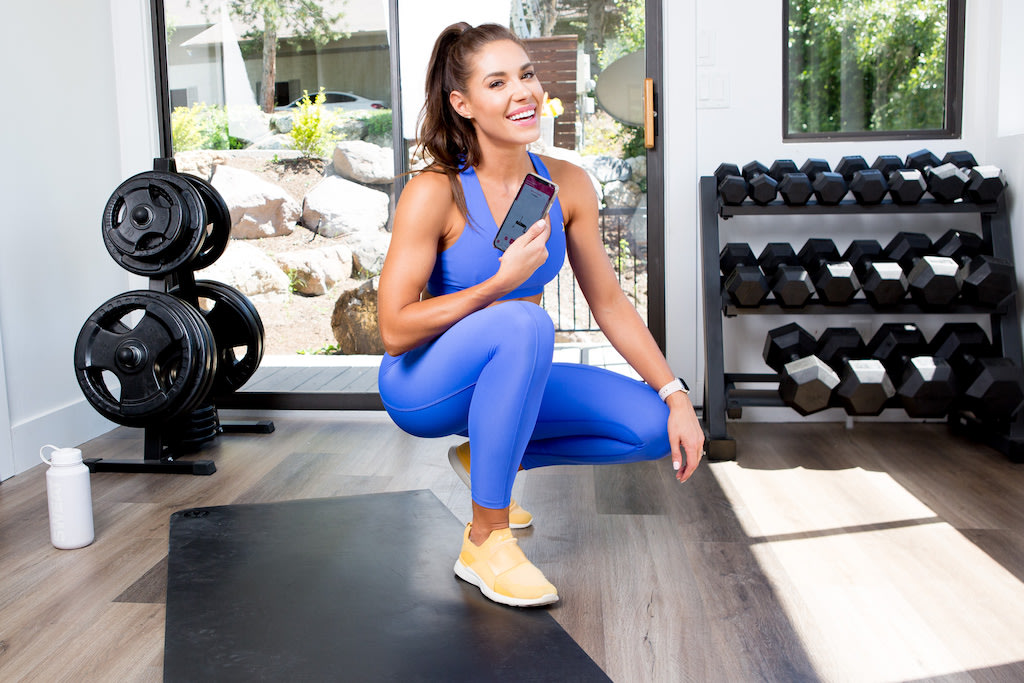How Much Weight Should You Lift?

April 26, 2021

There’s one question that I get asked often by the PWR Community: “which weight should I select for my workout?”.
If you don’t have access to the gym or a range of equipment right at this moment, you can still do a strength workout, using the equipment you have or even just your bodyweight.
Here’s how to choose the correct weight for each exercise in my Sweat programs:
How heavy should your weights be?
To maximise your workout, you need to select the right weight for each exercise.
The correct weight to use will depend on which muscle group you are training, as well as the specific exercise that you are doing. This might sound complex, but let me simplify it for you with one rule that you can apply.
The most appropriate weight for your weight training is always going to be the heaviest weight with which you can perform all of the reps in a given set with correct form.
The last few reps should challenge you, but you should feel that you can complete them safely and with correct form.
If you get to the end of your set and you feel as though you could easily keep going, it's time to increase the weight.
If you get half way through the set and the weight feels too heavy, or your form is compromised, consider reducing the weight for that particular exercise. Correct form in weight training is imperative.
Using a weight that is too heavy can put you at risk of injury. Whether you are just starting strength training with light weights or you’ve been strength training consistently for years and can lift heavier, you should be proud of the effort you put in!
The best weight to use is individual
The optimal weight for any given exercise varies from individual to individual. If you are training with a friend, you may find that they use a heavier weight than you do for one exercise, but for another exercise you’ll be able to use a heavier weight than they do.
Increase your weight as you get stronger
As you gain strength for a given exercise, you will find that the weight you started out with starts to get easier. When this happens, you can increase your weight. I recommend increasing the weight incrementally so that you continue to build strength in a very gradual way.
Both my PWR and PWR at Home programs are designed to help you to gain strength over time, following the training principle of “progressive overload”.
This means that as you progress through the training program, you will be able to increase the weight on certain exercises as your strength increases. You’ll also be challenged with new, more difficult exercises that will progress your strength and fitness.
NEVER compare yourself to others. Listen to your own body and patiently build your own strength — this is the fastest way to reap the benefits of weights training.
What if I don’t have a range of weights available?
When you don’t have access to a full range of weights, the best weight to use for your strength workouts is the weight, or substitute item, that you have available! This means that if you are working out at home and you don’t have options for different weights, or you don’t have any weights at all, you can still do a no equipment strength workout, or substitute using what you DO have available.
Training at home using bodyweight, resistance bands and lighter weights will still provide you with all of the benefits of exercise. Remember that you can always progress your strength by increasing the difficulty of bodyweight exercises, or by increasing the weight you use once you can access more gym equipment.
Follow my PWR programs with confidence and gain strength
You can always get a workout in by modifying the exercises to suit you. This might mean substituting your weights or including low-impact exercises so that you can progress your fitness.
The key to reaching your fitness goals is consistency. This doesn’t mean that every workout has to be perfect. It means that you commit to showing up for yourself, putting in your best effort on the day and expressing gratitude for your ability to move your body!
Kels
Xx

I’m Kelsey Wells, creator of the PWR programs and Redefine Fitness. I’ve been a certified personal trainer since 2016, am also certified in pre and postnatal fitness, and I want all women to feel self-acceptance and empowerment with my strength training programs.
* Disclaimer: This blog post is not intended to replace the advice of a medical professional. The above information should not be used to diagnose, treat, or prevent any disease or medical condition. Please consult your doctor before making any changes to your diet, sleep methods, daily activity, or fitness routine. Sweat assumes no responsibility for any personal injury or damage sustained by any recommendations, opinions, or advice given in this article.
Fitness